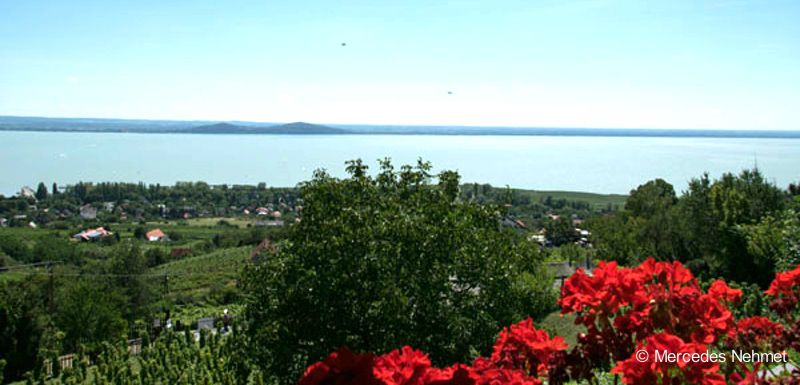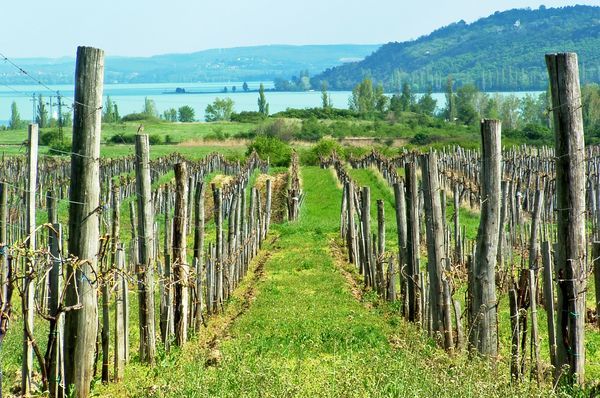Having been born in Hungary, I often spent my summer holidays at Lake Balaton during my youth. Anyone who has had the opportunity to admire the panorama of the Hungarian sea from a vineyard and to get to know the winegrowers and their passion for winegrowing never forgets the spirit of these places.
Hungary has a great winegrowing tradition. The wine character, unique in Central Europe, arises due to rich, volcanic soils and the environment of the Carpathian Basin. Hungary’s winegrowers have developed conceptually since the turnaround and possess a deeper understanding of the terroir and the growing areas. The high diversity of the grape varieties and numerous autochthonous grape varieties (Kéknyelu, Juhfark, Vulcanus, Zeus) characterise the wine styles. With the political turnaround, a qualitative rise began in Hungary. The central pillar of the positive development is that a new generation of winegrowers courageously decided to make the historically good reputation of Hungarian wines shine again.
Lake Balaton is one of Hungary’s most important attractions after Budapest. Thanks to the outstanding gastronomy and the characteristic wines, the largest lake in Central Europe or “the Hungarian sea” (as we affectionately call it in Hungary) is now an attraction for interested visitors from abroad more than just in the summer. The climate is balanced and the wine gardens are protected from frost damage. The large body of water of Lake Balaton contributes significantly to this climatic balance.
When it comes to winegrowing, Lake Balaton has a long history. The country’s most beautiful wine region is found here, with magnificent views onto the lake on offer from the hills. Vines were cultivated and wine pressed here by the ancient Romans. A winegrower who has spent all his life at Lake Balaton even told me that there was once a law in Hungary from an emperor in the Roman Empire who had winegrowing in Pannonia (the historical landscape in western Hungary), and thus also at Lake Balaton, prohibited, as he was of the opinion that the wines at Lake Balaton represented too much competition for the Italian wines (Lex Domitianus).
Hence, wine cultivation in Hungary has had to leave behind it a stony path in the last 20 years. Wine has been cultivated in Hungary for two millennia; for centuries, the best Hungarian wines have been considered pioneers of quality wines throughout Europe. Not for no reason did the saying „nullum vinum nisi hungaricum“ (No wine except Hungarian) have validity for a long time in the European royal houses.
The wine regions at Lake Balaton (approximately 8,600 ha) include the following winegrowing areas with a protected designation of origin (PGI):
Previously, it was claimed that the north side of Lake Balaton was more suitable for white wines and the south side more for red wines. When one considers more carefully the quality wines of the individual wine regions at Lake Balaton, one can clearly recognise that such sweeping statements are no longer valid. The wines from Badacsony with the characteristic outliers show a certain spiciness, high minerality and often striking acidity.
The wines on the southern bank of the lake (e.g. Balatonboglár) have a tendency towards a slightly milder acidity with a smooth fullness. Depending on the variety and the vinification, they possess more body and are more opulent. The Balatonfüred-Csopak winegrowing region, located somewhat to the east, is based very heavily on the “Olaszrizling” (known internationally as the Welschriesling). These wines are produced on the rich iron oxide and clay soil, resulting in wines with a strong character. (Source: Hoffmann Verlag – WeinReiseFührer).
My recommendation:
Exciting spring wines from small producers such as the white wine:
Laposa – Kéknyelu 2016
A curiosity from the wine region at the Badacsony. The small family winegrowing estate Laposa is found on the north side of Lake Balaton, where the volcanic mesa “Badacsony” and Lake Balaton meet. The submediterranean microclimate here and the cooling effect of the large body of water of the lake, as well as the soils rich in basaltic rock, create outstanding conditions for the emergence of exciting wines in the volcanic mountains of Lake Balaton. The Laposa winegrowing estate produces white wines only and a few years ago the son of the founder, Bence Laposa, assumed responsibility for the winegrowing estate; he is continuing it in accordance with the usual tradition in this region. This volcanic wine impresses with its high minerality and full character from the autochthonous grape variety “Kéknyelu”, which should be celebrated as a new discovery. It initially presents a fruity flavour reminiscent of flowers. Then a strong mineral character sets in, which rounds off the full body. One can taste the volcanic soil on which this wine grows. This is an unrivalled Hungarian wine.
Vernal dining recommendation: Catfish fillet fried on the skin with green asparagus on white wine foam
You can purchase or order Laposa wines as well as other Hungarian wines here: https://borstore.de/


